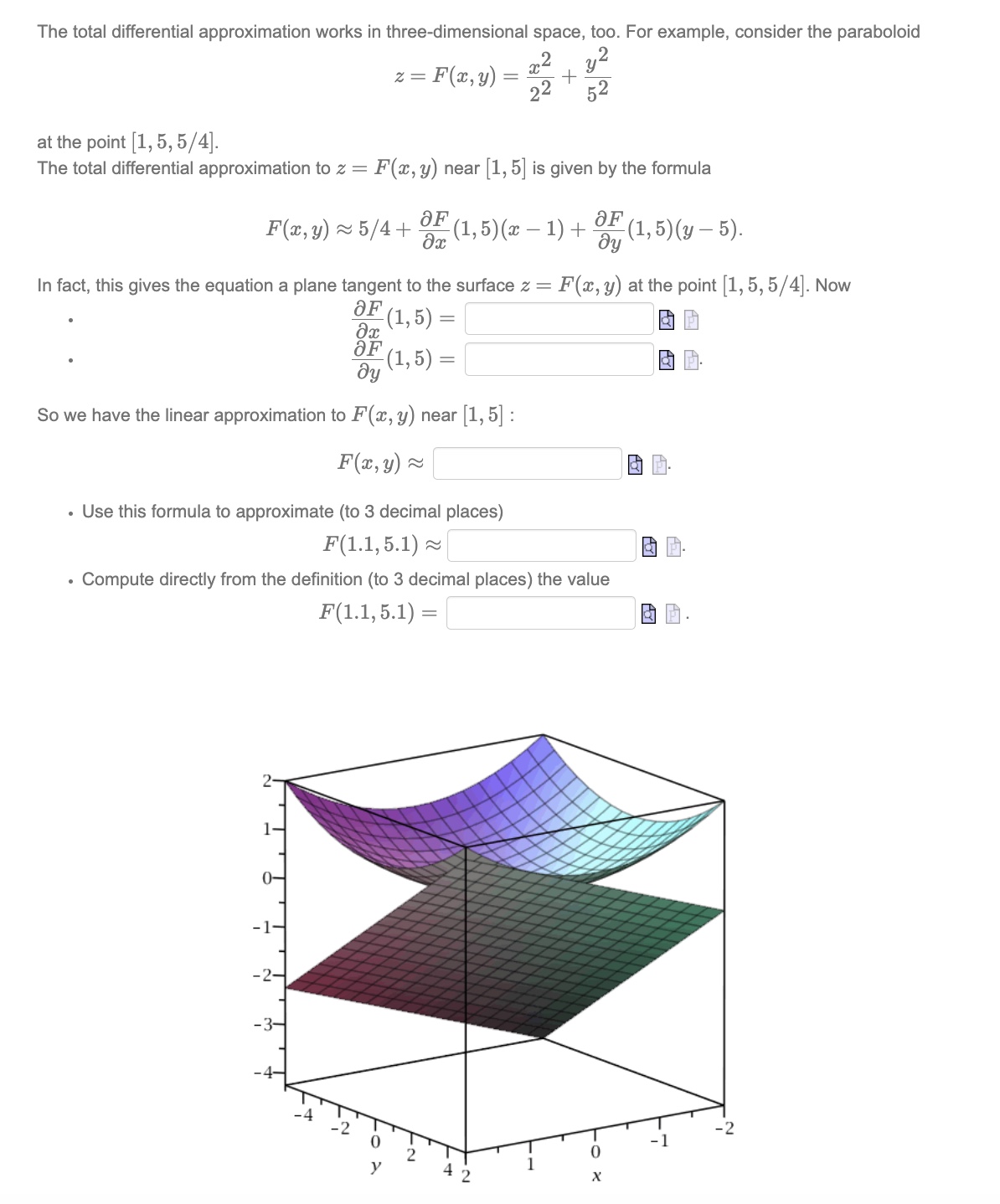Home /
Expert Answers /
Calculus /
the-total-differential-approximation-works-in-three-dimensional-space-too-for-example-consider-t-pa516
(Solved): The total differential approximation works in three-dimensional space, too. For example, consider t ...
The total differential approximation works in three-dimensional space, too. For example, consider the paraboloid
z=F(x,y)=(x^(2))/(2^(2))+(y^(2))/(5^(2))at the point
1,5,(5)/(4). The total differential approximation to
z=F(x,y)near
1,5is given by the formula
F(x,y)~~(5)/(4)+(delF)/(delx)(1,5)(x-1)+(delF)/(dely)(1,5)(y-5)In fact, this gives the equation a plane tangent to the surface
z=F(x,y)at the point
1,5,(5)/(4). Now
(delF)/(delx)(1,5)=
(delF)/(dely)(1,5)=Q 줨. So we have the linear approximation to
F(x,y)near
1,5:
F(x,y)~~Use this formula to approximate (to 3 decimal places)
F(1.1,5.1)~~囯 Compute directly from the definition (to 3 decimal places) the value
F(1.1,5.1)=图
